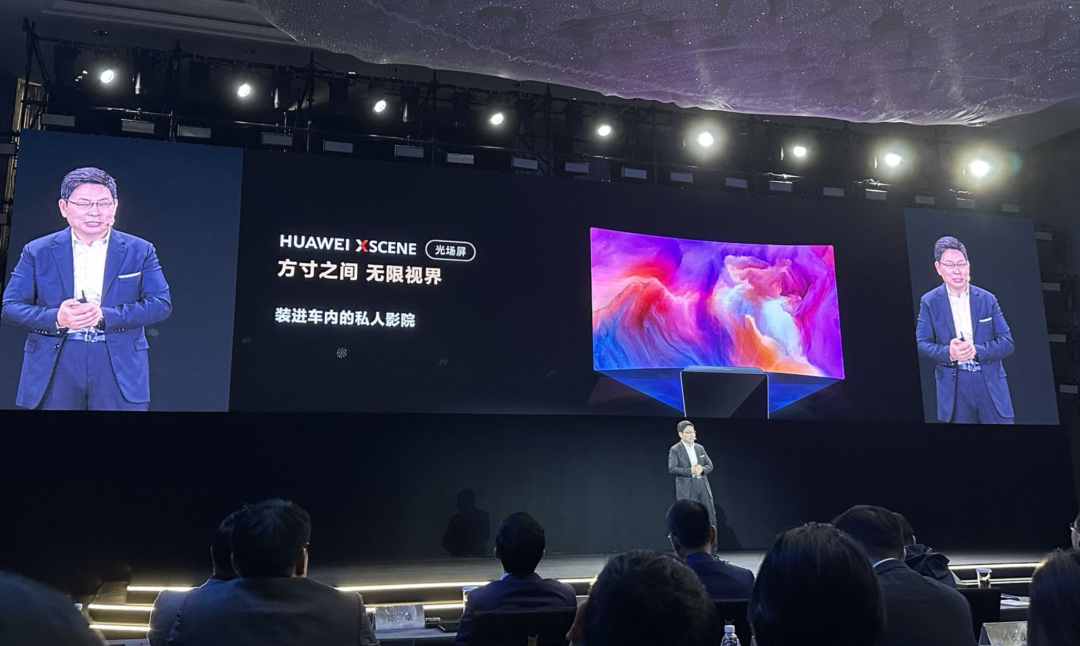On April 16th, Huawei Intelligent Automotive Solution Conference was held, and Garage 42 was invited to attend. At the conference, Yu Chengdong, Huawei’s executive director, CEO of the Terminal Department, and CEO of the Intelligent Automotive Solution BU, unveiled multiple intelligent product solutions for the automotive industry in the areas of intelligent driving, intelligent cabin, and intelligent vehicle-mounted lighting.
However, among these solutions, the Huawei xScene light field screen, which was launched by Huawei, is the one that really aroused our strong curiosity. We had an in-depth experience of this product on-site and communicated closely with Huawei about its technical principles and product logic.
The overall feeling after experiencing it is: Huawei intelligent vehicle-mounted lighting is not to be underestimated.
Private cinema in the car, stunning effect
At the moment we saw the Huawei light field screen, the first word that came to mind was “stunning”.
The reason is: with a small screen in extremely limited car space, Huawei light field screen can present a stereoscopic cinema visual effect.
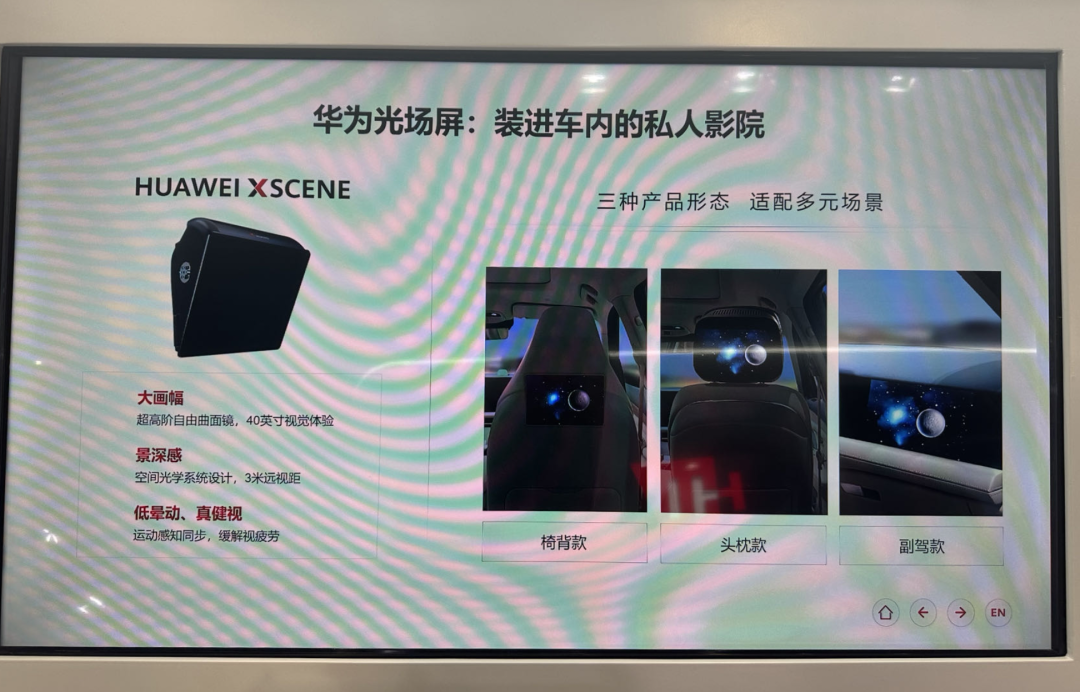
Specifically, the highlights of the Huawei light field screen are as follows:
- Strong sense of depth of field. At the moment you sit in front of the light field screen, you can instantly feel a strong sense of depth of field. The distance between your eyes and the light field screen is about 0.5 meters, and the image displayed on the light field screen is visually inward and downward from the screen. According to the on-site staff, the visual distance between human eyes and the imaging screen is 3 meters.
- Large screen. Based on the imaging effect far away from 3 meters, the light field screen can visually present a 40-inch screen, effectively enhancing the in-car viewing experience.
- High clarity. Although the visual distance between the human eye and the light field screen image reaches 3 meters, the actual display effect of the image is clear and delicate, and the video playback and switching process is very smooth. According to the staff, the image clarity of the light field screen is as high as 90PPD (Pixels Per Degree), exceeding the limit of the normal resolution of human eyesight (about 50 to 60 PPD).
- Eyes are less prone to fatigue. Due to the display effect mentioned above, when a passenger watches the light field screen with far imaging, looking into the distance can fully relax the ciliary muscle, effectively alleviating eye fatigue. The feeling of watching the screen with your eyes is relatively relaxed, and without special focusing, your eyes are less prone to fatigue.- It is not easy to get carsick when watching movies on mobile phones, tablets, and rear LCD screens while driving. However, during our actual experience for more than ten minutes with the light field screen, we can also perceive the outside scenery changes brought by the car’s movement while watching movies, allowing us to perceive the motion information outside the window with peripheral vision, which is consistent with the vestibular sensation in the ear. This enables the eyes and brain to better adapt to changes in the external environment, thereby reducing the risk of carsickness. At the same time, due to the far-distance displaying effect of the light field screen, when the vehicle is bouncing, the image perceived by the eyes does not show a corresponding amplitude of vibration, so there is no obvious dizziness.
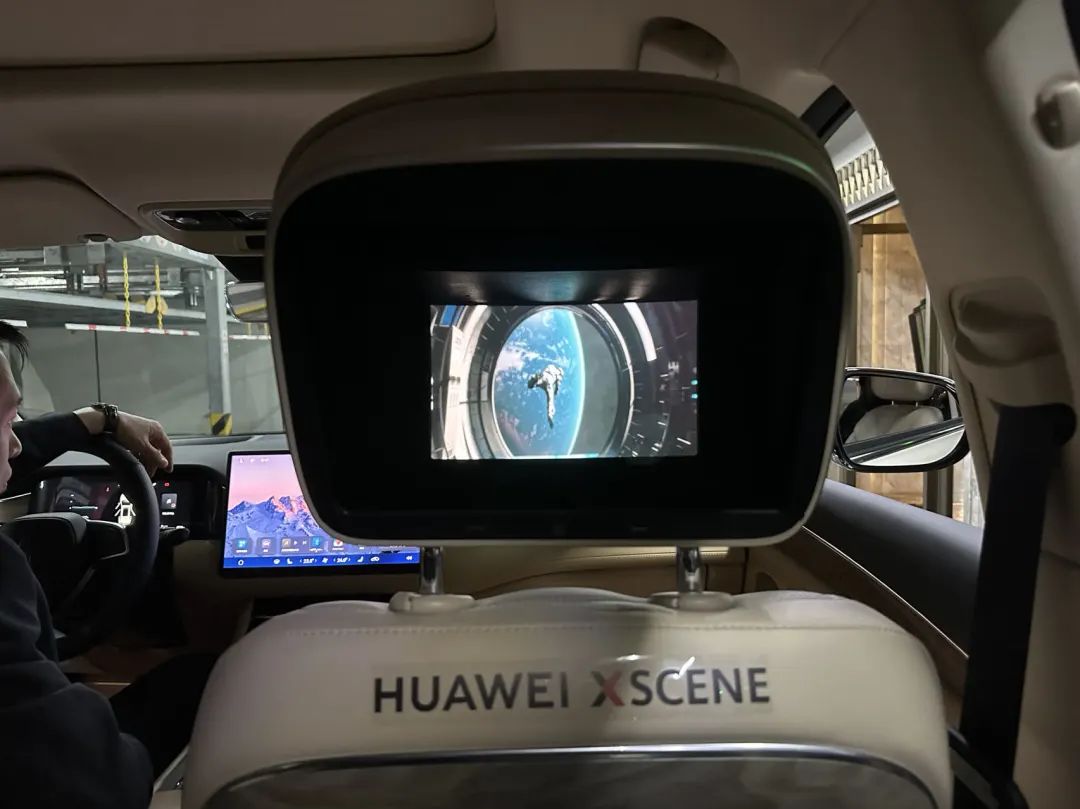
In addition to visual effects, there are other highlights in the experience scenario of Huawei light field screen:
- The picture itself is presented through a built-in optical engine, so the light in the picture will not scatter outwards through the screen, protecting the privacy of the picture. From the effect point of view, users can only see the playback screen when facing the light field screen, and neighboring passengers cannot see the screen.
- In terms of interactivity, the playback content of the light field screen is not interactive through touch, but according to the design needs of the car model, it can be connected to the user’s mobile app or car machine through NFC and other methods, which is more in line with users’ daily interaction habits.
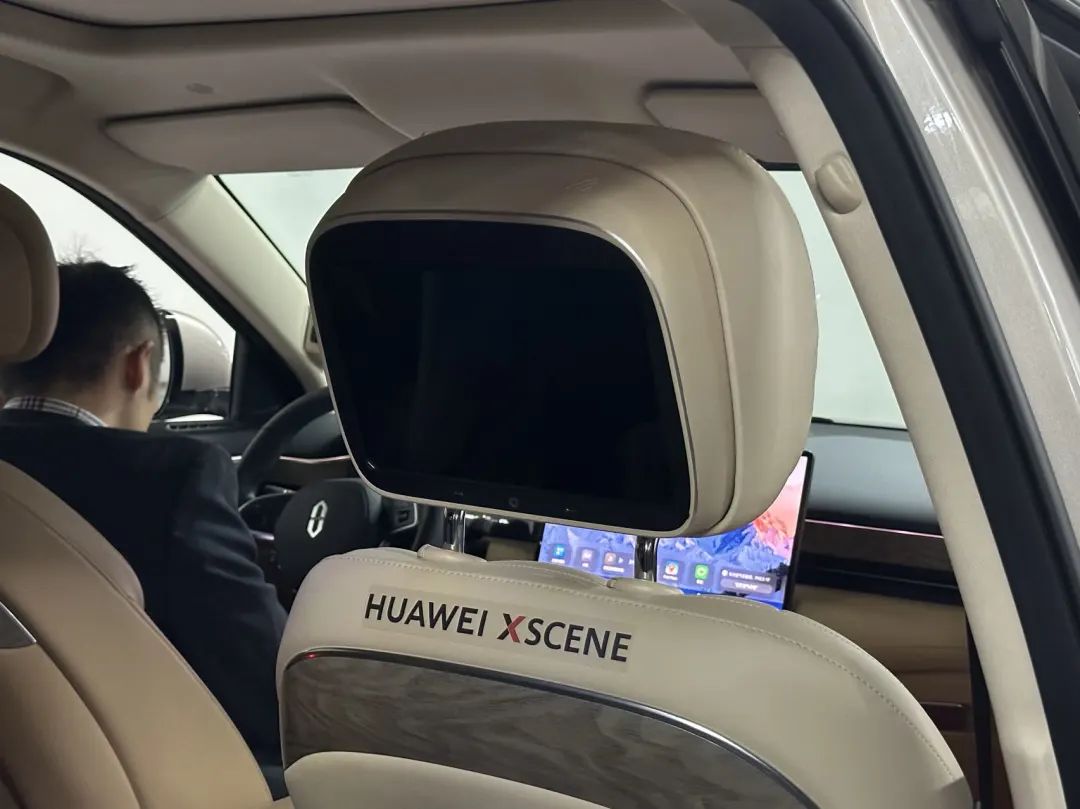
It is worth mentioning that from the application scenario perspective, combined with the speaker effect, Huawei light field screen can significantly improve the viewing or gaming experience in the car environment, bringing a strong sense of immersion, which can also meet the long-term entertainment or learning needs of children in the car. In addition, it can also better meet the privacy needs of in-car conference scenarios.
After experiencing it, we perceive that Huawei’s light field screen has a high degree of completion in the entire innovative solution. Of course, since we experienced the modified test car, there is still some room for optimization in practical experience, which requires Huawei to cooperate with seat manufacturers and host manufacturers to achieve it together.
However, from the overall perspective, the experience brought by Huawei’s light field screen is unexpected. From an industry point of view, the greater inspiration brought to us by Huawei’s light field screen is:Compared with traditional rear-seat LCD screens, the visual experience brought by the HUAWEI xScene light field screen is a breakthrough. Moreover, Huawei’s globally launched first automotive light field screen is likely to break the current automotive screen experience paradigm and open up a new track for automotive visual experience.
How is the disruptive experience of light field screen achieved?
After experiencing the effect of Huawei’s light field screen, our most concern is about how it is achieved.
At the press conference, we had in-depth communication with the staff of Huawei’s intelligent automotive light solution and concluded that the HUAWEI xScene light field screen launched by Huawei not only has a large number of black technologies from Huawei’s optical product line, but also the result of Huawei’s high attention to human engineering and a lot of professional research.
In terms of technology, in order to solve several difficulties in the display aspect of the light field screen, Huawei’s team has used several important black technologies. Specifically:
- In order to solve the problem of achieving far viewing distance, Huawei’s team used a three-dimensional optical system design to map the optical physics corresponding to human experience parameters, and precisely design a super high-order freeform surface shape to ensure that the light field screen can achieve visual imaging effect at a picture distance of 3 meters away from human eyes.
- In order to achieve the clear and pure effect of the light field screen picture, Huawei’s team used the design of polarization-independent medium. After more than 100 medium tests and 300 sets of scheme verifications, Huawei has been striving for excellence in design and manufacturing technology to achieve precise phase matching between media. Finally, Huawei achieved the effect of eliminating halo and preventing glare.
- In order to achieve image transparency and stronger immersion, Huawei’s ODP-S image source processor adopts collimated backlight design, which makes the internal stray light decrease by 50% and the ghosting brightness influence decrease by 80%. This design also makes the beam divergence angle less than 30 degrees and the axial brightness increase by 1.8 times, ensuring that the picture is brighter and clearer even when viewed at a far distance. Additionally, in order to realize multi-angle full-frame viewing and adapt to various application scenarios, Huawei’s light field screen adopts the light engine processing algorithm, which can eliminate optical distortion in real time and adjust the clarity of pictures and text.
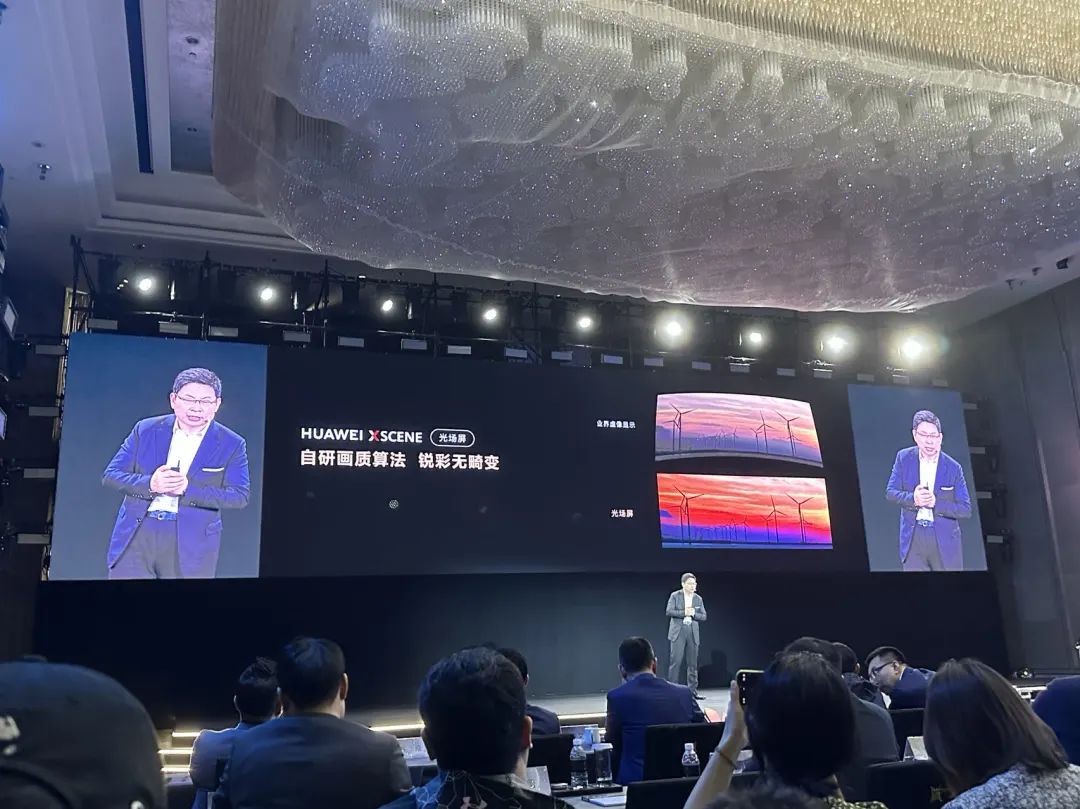 Overall, Huawei’s light field screen is an integrated solution from the underlying processor and algorithm to optical imaging design, which requires profound software and hardware capabilities to support.
Overall, Huawei’s light field screen is an integrated solution from the underlying processor and algorithm to optical imaging design, which requires profound software and hardware capabilities to support.
More importantly, on top of the technical competence, this solution also integrates Huawei’s extreme emphasis on human experience.
We learned that the initial proposal for Huawei’s light field screen was due to the insights and exploration of pain points in the current car screen usage experience by Huawei’s intelligent car-mounted optics team. According to the person in charge of Huawei, from the project initiation to the current release, countless investigations and demonstrations have been conducted.
During the project development process, based on user-experience design, Huawei’s team also collaborated with multiple third-party organizations to conduct in-depth research and demonstration, identify the most critical user-experience parameters, and verify the actual experience results.
Specifically, Huawei’s team, together with SGS (Standardization Administration of China Standards Technical Services Co., Ltd.) and the Key Laboratory of Human Factors and Ergonomics of the China National Institute of Standardization, conducted light field screen vertigo experience testing and certification in a car-mounted scenario, and compared it with other types of car screens. According to the combined subjective SSQ vertigo scale difference and objective EEG data testing, the results showed that:
In the car-mounted scenario, compared with other electronic display products (smartphones, tablets, car-mounted LCD screens) listed, Huawei’s light field screen has significant advantages and is the only SGS-certified gold-standard product for car-mounted display vertigo.
Overall, the stunning effect of Huawei’s light field screen is not only due to the company’s comprehensive technology capabilities, but also indispensable due to their emphasis on actual experience and professional research on human factors.
The “Backer” behind Huawei’s Light Field Screen
It should be emphasized that the team behind the Huawei light field screen project is of great significance.
It is understood that the Huawei light field screen comes from the intelligent car-mounted optics business that is currently a key development focus for Huawei’s optical applications. Behind this business is the powerful Huawei Optical Industry.
It is worth noting that Huawei has accumulated more than 30 years of core technology in the field of optical technology, established 13 research and innovation centers globally, led over 100 international standards for key technologies including laser light sources, spatial optics, and optical algorithms, and has long-term accumulation in the application of key technologies. In addition, Huawei is continuously investing and innovating in optical technologies such as algorithms, material processes, and device modules.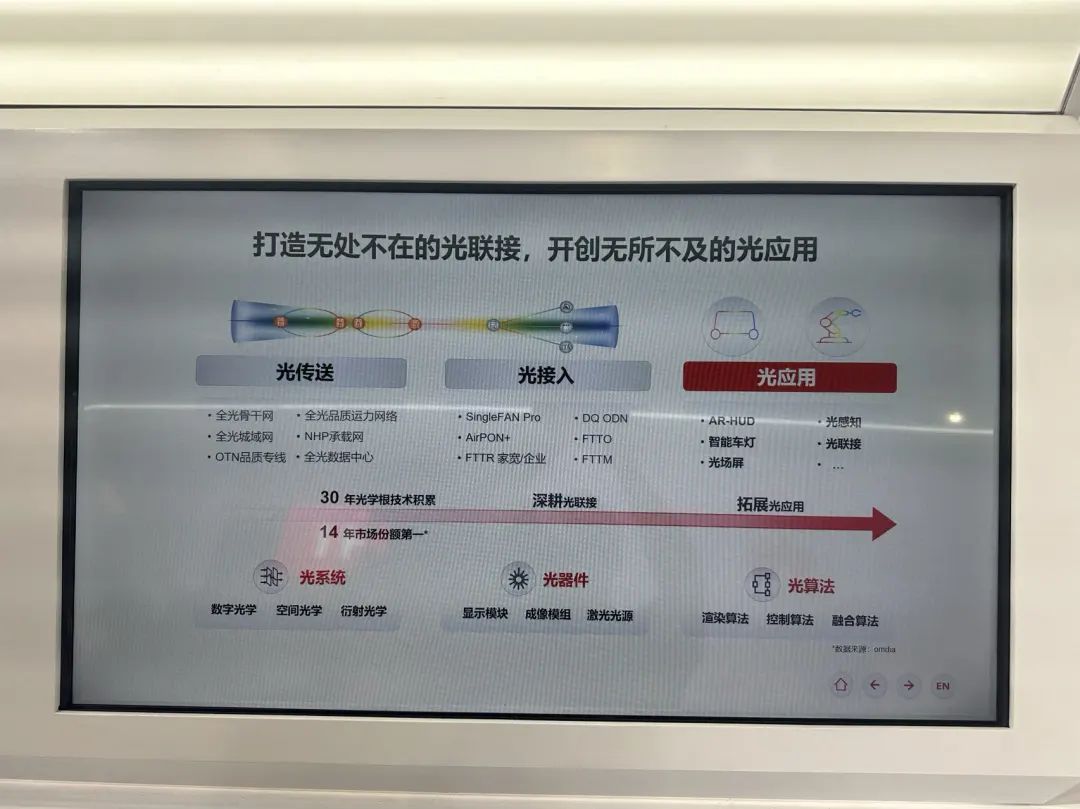
With Huawei’s comprehensive layout in the automotive industry, Huawei’s optical technology is also naturally extended to the automotive industry. Based on the combination of ICT optical technology and the automotive industry, Huawei has created the Huawei Intelligent Carrying Optical Solution.
In fact, in addition to the light field screen, the Huawei Intelligent Carrying Optical Solution series also includes intelligent car lights and AR-HUD, which were unveiled at the April 16th press conference. Specifically:
- The HUAWEI xPixel intelligent car light solution provides dual lamps and a 2.6 million pixel projection, and has the industry’s unique dual-lamp fusion algorithm capability, which can achieve constant high beam without glare through high-precision ADB (Adaptive Driving Beam), helping two-way driving safety; In addition, the solution also pioneered intelligent light carpet scenarios such as indicating vehicle width, blind spot interaction, and illumination, which has strong practicality.
- The HUAWEI xHUD AR-HUD solution adopts the industry’s first 2K automotive-grade self-developed optical imaging module, which can not only replace the instrument panel, but also surpass the instrument panel, and can realize more innovative applications such as intelligent driving visualization, lane-level navigation, reverse image, digital guide, and giant screen movie watching. In particular, based on the intelligent driving function of AR-HUD, it fits the display of the front vehicle and road surface, enhancing the driver’s trust and sense of security in intelligent driving functions.
Overall, with Huawei’s deep accumulation in the field of optical technology, Huawei’s intelligent car-carrying optical solutions and products mainly focus on key features such as safety assistance, intelligent interaction, and ultimate experience, helping independent innovation of automobile intelligence and networking, and meeting the ever-increasing demand for car-carrying displays by consumers.
It is worth mentioning that Huawei has cooperated with 16 units including China Intelligent Connected Vehicle Innovation Center (CAICV), Hongqi, BYD, SAIC, GAC, Geely, Great Wall, Siles, Tencent Smart Travel, etc., and jointly established the CAICV intelligent car-carrying optical display task force-its goal is to promote intelligent connected vehicles. Upstream and downstream companies in the industry chain cooperate to enrich car-carrying optical innovation applications, and help further improve the intelligence and safety of intelligent connected vehicles.
Therefore, it can also be seen that Huawei’s investment and promotion in the field of car-carrying light is also very strong.From the perspective of Huawei as a whole, the development and technological breakthroughs of vehicle-mounted optical communication are examples of its ability to empower the Chinese intelligent automobile industry through its own technological accumulation and strong product capabilities. Of course, in the view of Garage 42, the Chinese automobile industry also needs enablers like Huawei to fully utilize its software and hardware capabilities in the ICT industry to promote the development of the automobile industry and meet user needs in the electrification and intellectualization transformation.
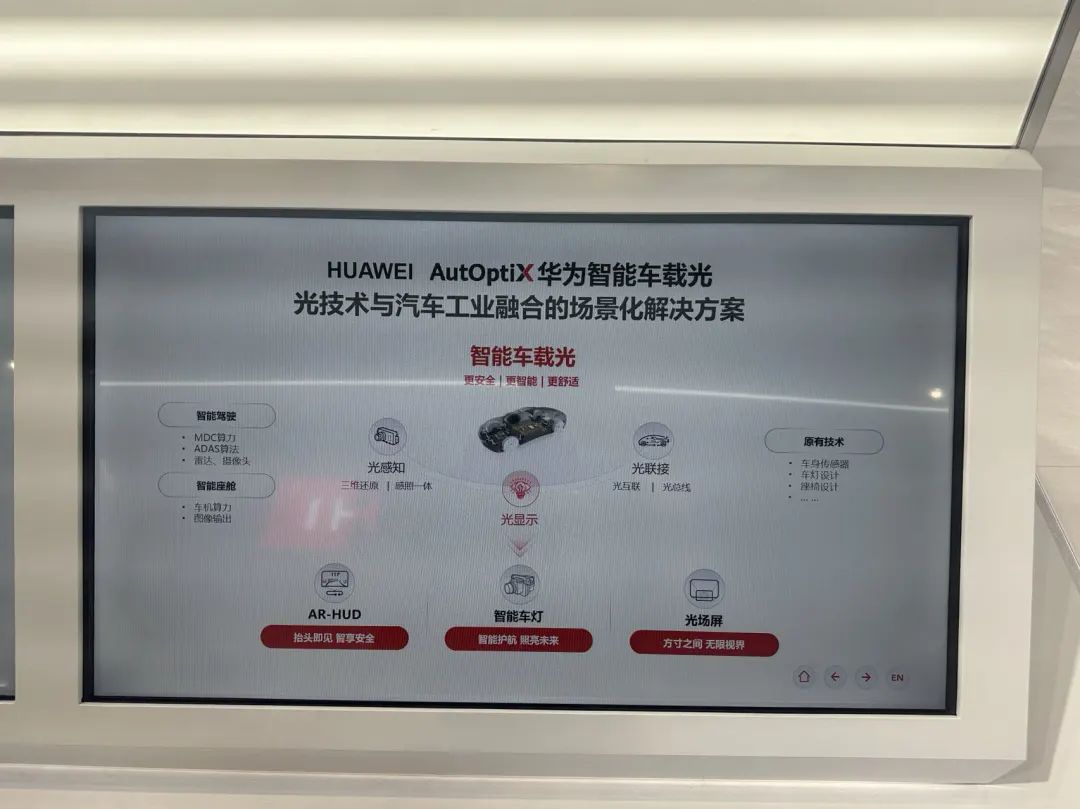
However, in order to truly benefit ordinary consumers with such high-tech products, Huawei’s relevant teams need to continue their efforts in technology cost, product experience, and commercialization. At the same time, it is also necessary to deepen cooperation with OEMs and Tier1. After all, any technology can only show its commercial value when it is put into practice.
Commercialization is becoming the breakthrough point for Huawei’s intelligent vehicle-mounted optical communication. Once successful, it is bound to have enormous market opportunities – we look forward to seeing what happens.
This article is a translation by ChatGPT of a Chinese report from 42HOW. If you have any questions about it, please email bd@42how.com.
